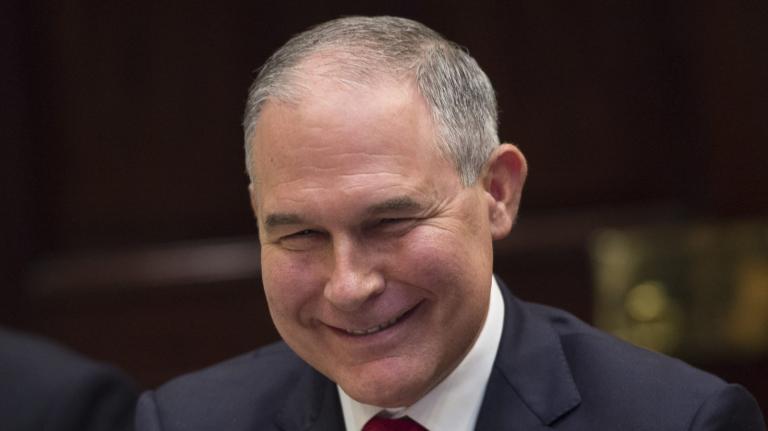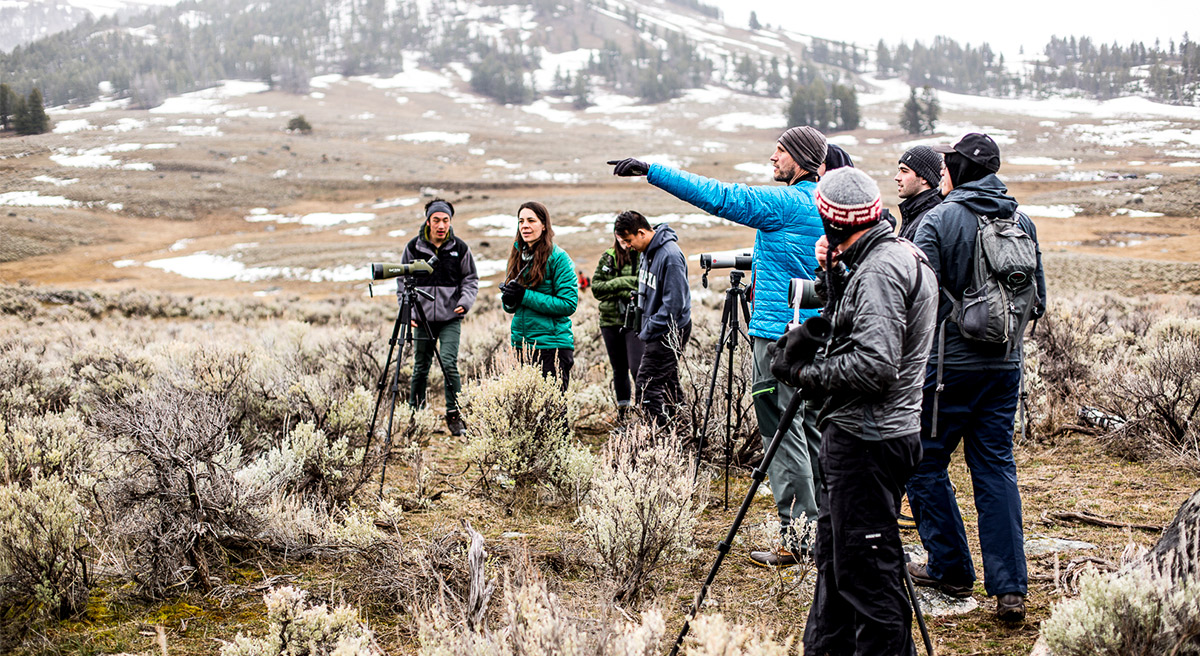Each year, UW students enrolled in the College of the Environment’s “Wildlife Conservation in Northwest Ecosystems” head to Yellowstone, where they begin a weeklong excursion into the untamed wilds of the park. By working alongside a team of UW professors and National Park Service biologists, they come to understand the rigors and the joys of fieldwork as they study an incredibly delicate and important ecosystem.
Their research, part of a decades-long program in the heart of Yellowstone, helps provide answers to some of the most pressing conservation questions of our day. How does climate change influence what scavengers like ravens, eagles, and bears eat? Do roads and hiking trails change how wolves and cougars hunt? Will Yellowstone’s efforts to reintroduce grizzly bears serve as a model for similar efforts across the country? Sometimes, the best classroom is a living one, amid snow-capped peaks, pristine alpine rivers, and sweeping grasslands dotted with bison. Forster explains why.
Q. What animals did you look for?
A. There were elk and bison, which are both very common throughout the park. We looked for ravens, bald and golden eagles, magpies. Then we looked for mammals such as wolves — which were very difficult for us to find throughout the whole week — grizzly bears, and mountain lions.
Q. Were you successful?
A. Wolves are one of the more elusive animals in the park. There are fewer than 100 in the area where we were looking. We ended up finding them on the day before we left. It was really, really amazing since we had spent so much time and so many hours looking for them. They were far enough away that the only way you could possibly see them was through a viewing scope. They were small, but it was one of the most rewarding experiences, finally getting to see these animals that we’ve learned so much about. To see them in the flesh was pretty awe-inspiring.
Q. Did you spot any other big predators in the wild?
A. We got really lucky with grizzly bears. There were some bison carcasses near the park entrance we used. They had fallen through the ice in the winter. Now that the ice was melting, the carcasses were exposed which brought out tons of scavengers of all sorts like foxes, coyotes, and ravens. We got to see grizzly bears in action every single morning feeding on the carcasses. Our professors said that they had never experienced anything like that. At one point there were two grizzly bears competing for the same carcass to feed on. It was like something out of National Geographic. It was so cool.
Q. Tell me about your fieldwork.
A. We were researching elk and their behavior in relationship to their landscape. We were also doing bird surveys. We would be dropped off in half kilometer increments, one student at a time. We would spend two or three minutes looking and listening for different birds and bird calls and then we would record the birds that we saw or heard. That gave us a sense of a very rough estimate of the total bird population of ravens, magpies, and eagles in the northern region of the park.
Q. Why was this research important?
A. Our elk study looked at how elk stay vigilant to predators. An elk that spends more time wary and alert spends less time on activities to boost its fitness like foraging or resting. We also took note of herd size and how the elks space themselves in the herd, which can help indicate how fearful they are. If we see trends over time where elk are spending more time doing different activities, this can give us an idea for how healthy the population is.
Our bird study focused on scavengers in the ecosystem. Scavengers feed on carcasses of dead animals and a common cause of carcasses is predators. Raven, magpie, and eagle dispersal and number can give us ideas of where predators are making kills and how active they are.
What makes these studies (and most studies in Yellowstone) so important and interesting is that they can be tied back to the reintroduction of grey wolves in 1995. Wolves are a keystone species in the ecosystem and seeing how the wolves influence so many facets of life in the park nails in how important top predators are in the wild and gives us evidence for why they should be protected.
Q. Do you have a favorite experience from your trip?
A. We spent a day hiking through the backcountry with one of the park biologists who was a specialist on wolves and elk and their predation. We were looking for sites where wolves had killed an elk and left the carcass. I walked to one side of the hill and looked down a crest and spotted the carcass. We all gathered around it and took a bunch of measurements on how healthy it was when it died and how large it was. Because I found it, the biologist let me do a bunch of the measurements. I got to saw through its femur bone which was gnarly, but it was very, very cool.
We also got the opportunity to catch some golden eagles out in the field. We didn’t do the physical catching; we watched the trained experts do it and then test for lead poisoning in its blood because that’s one of the biggest threats to the population. Hunters have started using lead bullets again, and the bullets get left in the carcasses which the eagles feed on, and it gets into their blood. That was amazing — the opportunity to get to see this huge bird right up close and see those massive talons. It was really, really memorable.
Q. How does learning out in the field compare to learning in a traditional classroom setting?
A. I’m a visual and hands-on learner. Getting to go out into the field and be hands-on and actually see the animals that we’re learning about is completely different. For instance, getting to hold and feel the weight of the leg of an unhealthy elk is completely different than taking notes on what makes an elk unhealthy.
Q. Why are you so passionate about the natural world?
A. Funny enough, I used to always watch Steve Irwin on TV when I was a kid. We’re now witnessing one of the largest mass extinctions in human history of wildlife species. I do believe that humans play a huge role in that and we should take responsibility for what we’ve done to the environment. It’s definitely a passion of mine, trying to see as many animals as I can in person and this trip was a great opportunity to do that.
Yellowstone may hold the keys to the future of wildlife management, but even the best management practices fail if they don’t consider the needs of people living in the ecosystem. Park biologists and ranching families say building trust is the secret to managing landscapes for wildlife and people. Learn more about what it takes to undertake successful field science by following along on UW’s Yellowstone research trip.
Here at Grist, you know what we like almost as much as solar panels? Partners! They help us keep the lights on so we can keep bringing you the best and most Gristy journalism on the planet. Click here for more information.




